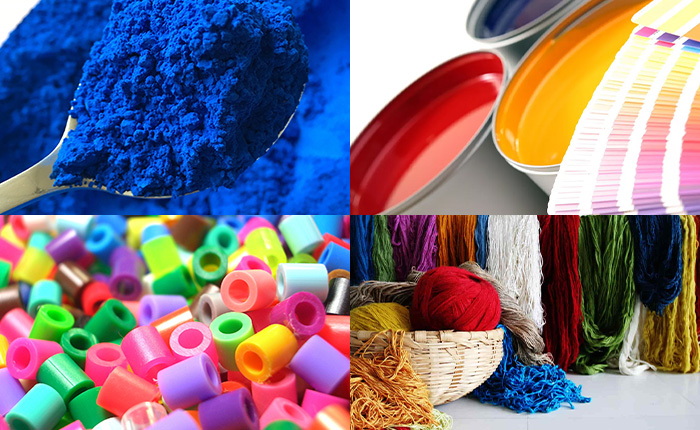china indigo dyeing
The Art and Tradition of Indigo Dyeing in China
Indigo dyeing is a fascinating and ancient tradition that has been practiced in China for centuries. This artisanal craft not only showcases the country’s rich cultural heritage but also reflects the profound connection between nature and human creativity. The deep, vibrant blue produced by indigo has played a significant role in Chinese textiles and has influenced fashion and art throughout the ages.
Historical Significance
The history of indigo dyeing in China can be traced back to the Han Dynasty (206 BC - 220 AD), when natural indigo was first used as a dye. The practice became widespread during the Tang Dynasty (618-907 AD) and Song Dynasty (960-1279 AD), where it was intertwined with trade along the Silk Road. Indigo was highly valued not just for its striking color but also for its symbolism of prosperity, health, and good fortune. The dye was derived from the leaves of the indigo plant, mainly *Indigofera tinctoria*, which has been cultivated for thousands of years.
The Dyeing Process
Traditional indigo dyeing is a meticulous process that requires skill and patience. The process typically begins with the collection of indigo leaves, which are fermented to extract the dye. This fermentation creates a rich, blue liquid known as indigo vat. The dyeing technique itself often involves a method called “shibori,” which encompasses various resist dyeing techniques, including folding, twisting, or binding fabric to create intricate patterns.
The fabric is immersed in the indigo vat multiple times to achieve the desired shade of blue. Each dip into the vat allows the fabric to absorb more dye while the oxidation process turns the fabric from green to deep blue upon exposure to air. This complex interaction between the natural dye and the fabric is what sets indigo dyeing apart from synthetic methods.
Cultural Relevance
china indigo dyeing

In many ethnic minority communities in China, particularly among the Miao, Dong, and Yi people, indigo dyeing is not just a craft but a vital part of their cultural identity. Each community has its own unique patterns and styles, which are often embroidered onto clothing, textiles, and accessories. These designs carry deep meanings, often representing nature, mythology, and ancestral stories. Wearing indigo-dyed garments often signifies pride in one’s heritage and an appreciation for traditional craftsmanship.
Indigo dyeing has also seen a resurgence in popularity as more people around the world seek sustainable and eco-friendly fashion choices. The natural process of dyeing with indigo not only avoids harmful chemicals found in synthetic dyes but also supports local farmers and artisans.
Modern Innovations
In recent years, several designers and artisans have embraced traditional indigo dyeing techniques while incorporating contemporary aesthetics. This fusion of old and new has led to the creation of modern clothing and home decor items that appeal to a broader audience. Workshops and courses on indigo dyeing have emerged, allowing enthusiasts to learn the craft and appreciate the artistry involved.
Moreover, the global movement towards sustainable fashion has propelled the indigo dyeing revival. Consumers are becoming more conscious of the environmental impacts of their clothing choices, and many are gravitating towards artisanal products that tell a story. As a result, the traditional craft of indigo dyeing is gaining recognition not only as an art form but also as part of a larger movement towards eco-consciousness.
Conclusion
Indigo dyeing in China is a vibrant and enchanting tradition that marries history, culture, and artistry. It symbolizes more than just a color; it embodies the skills and stories of countless generations. As this craft continues to evolve, it stands as a testament to the enduring influence of nature and tradition, connecting people across time and space through the universal appeal of the color blue. Whether through a handmade garment or a piece of artwork, the legacy of indigo dyeing remains a fundamental thread in the rich tapestry of Chinese heritage.
-
The Timeless Art of Denim Indigo Dye
NewsJul.01,2025
-
The Rise of Sulfur Dyed Denim
NewsJul.01,2025
-
The Rich Revival of the Best Indigo Dye
NewsJul.01,2025
-
The Enduring Strength of Sulphur Black
NewsJul.01,2025
-
The Ancient Art of Chinese Indigo Dye
NewsJul.01,2025
-
Industry Power of Indigo
NewsJul.01,2025
-
Black Sulfur is Leading the Next Wave
NewsJul.01,2025

Sulphur Black
1.Name: sulphur black; Sulfur Black; Sulphur Black 1;
2.Structure formula:
3.Molecule formula: C6H4N2O5
4.CAS No.: 1326-82-5
5.HS code: 32041911
6.Product specification:Appearance:black phosphorus flakes; black liquid

Bromo Indigo; Vat Bromo-Indigo; C.I.Vat Blue 5
1.Name: Bromo indigo; Vat bromo-indigo; C.I.Vat blue 5;
2.Structure formula:
3.Molecule formula: C16H6Br4N2O2
4.CAS No.: 2475-31-2
5.HS code: 3204151000 6.Major usage and instruction: Be mainly used to dye cotton fabrics.

Indigo Blue Vat Blue
1.Name: indigo blue,vat blue 1,
2.Structure formula:
3.Molecule formula: C16H10N2O2
4.. CAS No.: 482-89-3
5.Molecule weight: 262.62
6.HS code: 3204151000
7.Major usage and instruction: Be mainly used to dye cotton fabrics.

